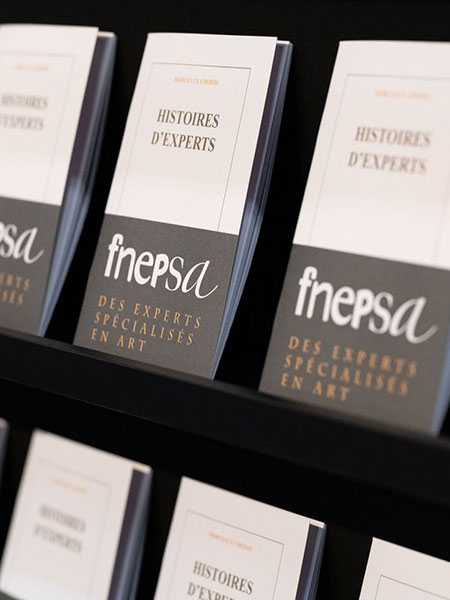History of the book through its iconography by Isabelle Scappazzoni
The binding, as an object, refers to the fascinating history of the book, its role and its diffusion through the centuries. It is both a technique and an art, the result of two successive acts: protection and decoration. The bookbinders who have devoted themselves to this task over the centuries have not ceased to contribute to the evolution of their art. They have thus brought bookbinding into the world of the decorative arts.
Photography, cinema, painting, sculpture, engraving, the art of fire, but also literature... all the arts have always included and represented books. And this is true whether they are specific works or anonymous works, whether the book is at the centre of the composition or only appears as a motif, a plastic volume. In this study, we will emphasise not only the aesthetic but also the historiographical value of this usage. The structure of the book, as well as the styles of decoration, have evolved slowly over the centuries, progressing in different ways in different countries but in parallel with other arts such as painting, sculpture or drawing, for example.
Thus, by studying the representations of the book in the arts from all periods, we will discover that the history of the book in its different aspects, technical and decorative, accompanies that of civilisations. We will start with the Age of Enlightenment.
1. Books as attributes of knowledge in the 18th century
The printed book was the main vehicle for the philosophy of the Enlightenment, and was at the centre of all the intellectual and scientific life of Europe in this century.
Whether for the pleasure of the eye, for study or for the dissemination of ideas, they became seductive, using colour. Books always bear witness to the aesthetics and values of their time.
A considerable place is occupied by the great collections of documented works, including Diderot and d'Alembert's "Encyclopédie": the aim was to make available all human knowledge by presenting it in a critical manner.
Eighteenth-century bindings show a remarkable correspondence between the styles of bindings and the forms used in the decorative arts (furniture, ironwork, embroidery, etc. ....).
It appears that luxury bindings are no longer limited to the framework of the scholarly library, as they are both a social sign and an object of selection, but are integrated into the entire lifestyle of the wealthy social categories.
2. Representations
The 18th century was marked by the development of bibliophily and the taste for large collections, which supported the flowering of an art of bookmaking based on elegance.
Smaller and thinner books were increasingly produced, and even tiny books were made. The century also saw the advent of collections in octavo format, then called libraries, or collections of complete or selected works.
The book appeared to be the guarantor of the fame and greatness of characters, hence the portraits made with books. As a cultural testimony, a sign of belonging, a manifestation of interest in the things of the mind, a profession of public faith on a given subject, the book does not necessarily have to be the work of the person represented in order to signify all this.
The cult of the book and the craze for reading became the emblem of the century. The portrait of the author with a book is one of the most stable iconographic traditions (Fragonard, Tiepolo).
Queens and ladies of the court were portrayed with books to underline their role as protectors of fine literature and refined readers.
Books have been and still are hoarded as art objects and also as intellectual containers.
Paying particular attention to their external appearance is part of a long tradition: shapes, formats can subtly influence the way a book is approached. And so, even the physical presentation of the text predisposes or not to reading, even before a line is read.
The book, a familiar object, whose history is intertwined with that of thought, radiates a mysterious aura.
In conclusion, based on Scripture, Christianity has allowed the book to become, over the centuries, a central figure in the representation of the world.

* Required fields
75001 Paris
France
